Travel money guide: Europe
Planning a trip to Europe? Discover how you can get the most out of your travel money here.
In this guide
Travel money type
Compare
Locations
Compare more cards
Top picks of 2021
If you’re heading to Europe to sightsee the Eiffel Tower, a Spanish flamenco dance or go on a business trip, you’ll want to find out common methods of payment in the specific country you’re visiting. Most European countries take Visa and Mastercard credit cards as a form of payment. Travel with a Capital One VentureOne Rewards Credit Card to avoid all the foreign transaction fees that most credit cards charge.
However, you’ll need euros or the local currency in some countries like the Czech Republic, where restaurants and smaller shops may not be friendly to plastic. While there are European countries that use their own currency — for example, the Czech Republic and Hungary — the euro is the national currency of the majority of Western and Central European nations.
Our picks for traveling to Europe

Travel card with no annual fee
Capital One VentureOne Rewards Credit Card
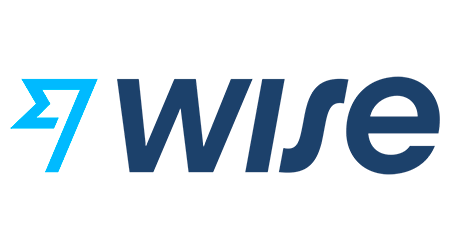
Send and receive 50+ currencies right from your phone

28+ currencies and real exchange rates. Crypto deposits aren’t FDIC insured.
Travel card, debit card or credit card?
A prepaid travel card can be a good idea if you’re staying within the European financial zone and the United Kingdom. If you’re traveling to another destination like Croatia, the Czech Republic, Sweden or Hungary, you’re better off using a credit card that waives the fee for foreign transactions — no ATM fees are a bonus too.
While there are travel cards that don’t charge you for currency conversion — the back-end fees, exchange rate margin and juggling another account make a travel-friendly debit card a better option.
A credit card and debit card combination makes for a good mix to access cash and make purchases. A credit card is a must: Interest-free cards give you time to pay back your purchases, some cards offer free travel insurance and credit cards give you peace of mind through access to emergency cash.
Don’t use a credit card for cash withdrawals — it’s almost too expensive to justify. Use a debit card or a prepaid travel card to withdraw cash.
These are your options for spending money in Europe
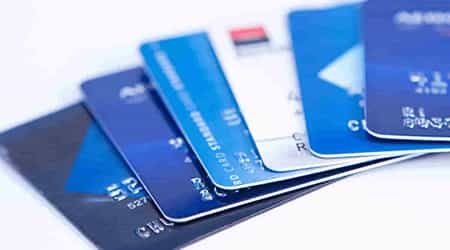
Compare credit cards for travel
Using a credit card
Look for travel-friendly credit cards that you can swipe without being charged a foreign transaction fee — typically 2% to 3% — or international ATM fee. For example, the Capital One Venture Rewards Credit Card will avoid the pesky foreign transaction fees while offering you 2x miles on all purchases. Choosing a travel credit card often means that you get purchase protection, travel insurance or a rental car collision waiver as part of your benefits, helping you get more bang for your buck with your card.
- May have no international ATM fees
- Operator fees may apply
- Cash advance fees
Which credit card issuers are accepted in Europe?
You’ll find Visa and Mastercard to be widely accepted in Europe. Generally speaking, you’ll find merchants in Europe willing to accept American Express cards and even fewer that will take Discover cards. If you have an American Express card, you’ll have the best luck using it in areas frequently traveled by tourists or business travelers.
High
High
High
High
Medium
High
Low
Medium
Compare travel credit cards
Narrow down top travel credit cards by welcome offers, rewards and annual fees to find the best for your budget and financial goals. Select Compare for up to four products to see their benefits side by side.
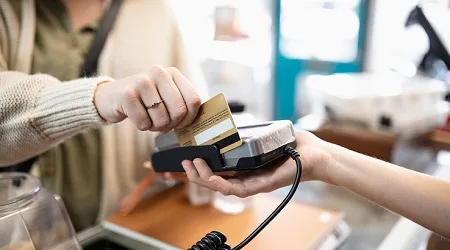
Best international debit cards
Using a debit card
Visa and Mastercard branded debit cards will work throughout Europe without a problem.
There are fees that come with international debit card use — mainly currency conversion fees and ATM fees. With a Betterment Checking debit card, you can get foreign and ATM fees reimbursed as you go to keep your wallet padded on your journey.
- Tip: Debit card providers like Bank of America and Barclays are members of a Global ATM Alliance that waives international ATM fees.
- May have no international ATM fees
- No ATM operator fees on European bank ATMs for cash withdrawals
- International ATM fee and currency conversion fee apply when withdrawing cash
Did you know?
You may be able to avoid the cash-advance fee and interest charges if you preload your own money onto your credit card. The rules are different for each provider.
The catch: You’re waiving some anti-fraud guarantees when you preload your own funds onto your credit card.

Prepaid travel money cards
Using a prepaid travel card
A travel card can hold multiple international currencies, and you save on the fee for currency conversion. You can load euros and GBP on most travel cards, but few other European currencies will be supported.
- Multiple international currencies load euros and GBP on most travel cards
- Currency conversion may apply
- Conversion fee is almost double the charge than on debit and credit cards
Must read: Countries in Europe that haven’t adopted the euro
If you’re traveling to one of these European countries, consider using a debit card or credit card rather than a prepaid travel card. A currency conversion fee applies if you’re spending in a currency not loaded on the card. In most cases, the conversion fee is almost double the charge than on debit and credit cards.
- Bulgaria
- Denmark
- Latvia
- Lithuania
- Romania
“Although the United Kingdom is not a part of the Euro Zone, all travel cards let you load pounds sterling. Preload both euros and pounds and you can use the one card to spend on both sides of the English Channel.”
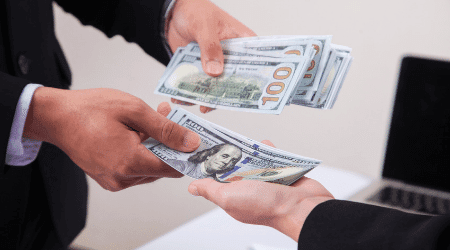
Cash pickup services
Paying with cash in Europe
There are places where you’ll need cash, but card payments are pretty standard throughout Europe. Contactless card payments are common in places like France and Germany, but cash is necessary if you’re heading off the beaten track — places like smaller Greek islands predominantly use cash.
- Payment flexibility
- Convenience
- Difficult to manage expenses
- Higher risk of theft

Traveler’s checks guide
Using traveler’s checks
It’s not necessary to take traveler’s checks with you on your trip to Europe. Financial institutions offer money-back guarantees if you’re the victim of fraud, and there’s a limited number of places where you can cash your checks.
- Acceptance
- Security
- Can be costly with initial purchase charges
- Not all merchants accept traveler’s checks
European currency
Although the euro was officially introduced in 1999, European citizens didn’t start to see the new notes and coins till sometime in 2003. The notes are all different colors and feature different architectural designs from different eras.
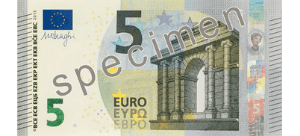 | 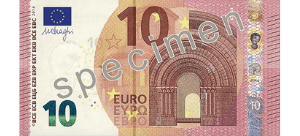 | 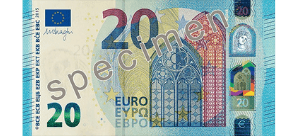 |
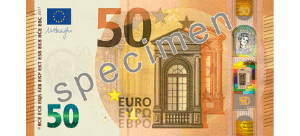 | 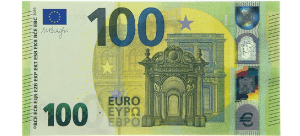 |
The main banks in Europe are:
- HSBC Holdings plc, GBR
- BNP Paribas SA, FRA
- Crédit Agricole Group, FRA
- Deutsche Bank AG, DEU
- Banco Santander SA, ESP
- Barclays plc, GBR
- Société Générale SA, FRA
- Groupe BPCE, FRA
- LLoyds Banking Group plc, GBR
- ING Groep NV, NLD
- UniCredit SpA, ITA
- Royal Bank of Scotland Group plc, GBR
- Intesa Sanpaolo SpA, ITA
- Crédit Mutuel Group, FRA
- UBS Group AG, CHE
Buying currency in the US
If you really want to buy euros before you leave, consider nonbank foreign exchange providers such as Travelex. Travelex lets you order cash online and pick it up at the airport before you leave.
You won’t need euros to pay for your visa when you arrive in Europe. Americans get an automatic 90-day visa on arrival.
Refreshing in: 60s | Tue, Nov 22, 06:42AM GMT
Exchange rate history
It’s very difficult picking the future movement of currency pairs, especially the top two traded currencies in the world. The euro was adopted in 1999, and in 2002 it was introduced as the legal tender — circulating and being used in 12 countries.
The value of the dollar next to the euro dropped significantly in 2008 when an economic crisis made its way around the world. For the last three years, 1 euro has been worth about $1.10 to $1.30.
Find cash and ATMs in Europe
Most airports and banks across Europe will house ATMs inside that are friendly to Visa and Mastercard, though you may see Visa’s Plus or Mastercard’s Maestro or Cirrus symbols on the machines. When you’re withdrawing cash abroad, it’s handy to use an account that doesn’t charge currency conversion or international ATM fees. The Betterment Checking debit card, for example, reimburses these foreign fees, leaving more cash in your account to spend on your travels.
How much should I budget to travel in Europe?
Countries like France and Germany are a touch more expensive than places like Greece, but no matter where you are in Europe, your trip is going to be as low-cost or expensive as you let it be.
Some basic prices across Europe
Accommodation is likely to be your biggest expense when you’re visiting Europe. When it comes to food, if you’re eating in a restaurant, prices will be higher than grabbing a bite on the street (gyros in Greece), trapizzino in Rome, or a jambon et fromage baguette (ham and cheese sandwich — far better than it sounds) in France are all less than five euros.
We’ve included a snapshot of some prices for budget, mid-range and top-end hostels and hotels in different European countries below. All prices are in US dollars.
| Greece (Athens) | Germany (Berlin) | France (Paris) | Italy (Rome) | |
|---|---|---|---|---|
| Accommodation | Hostel $15 per night | Hostel $15–$25 | Hostel $35 per night | Camping $15 per night Hostel $25 per night |
| Meals | Gyros (street) $3.50 Small beer (supermarket) $1–$2.50 | Currywurst (street) $3.50 Beer (supermarket) $2.50 | Baguette (supermarket) $1.75 Cheese (supermarket) $3.50 Average wine (supermarket bottle) $2.25–$8 | Pizza (restaurant) $6–$12 Wine (restaurant) $6–$12 per glass |
| Activities | Walk around the Acropolis and Parthenon (pay $35 to go inside or enjoy the spectacular view from the outside for free) | Walking tour of Berlin Free (although it’s polite to tip the guide a couple of euros at least) | Get the food items mentioned above and camp at the Champ-des-Mars for a view of la Tour Eiffel. | Walking tours of Rome Free (plus a tip for the guide) |
*Prices are approximate and based on summer seasonality and are subject to change.
In most European countries, you can expect to pay anywhere from 10 to 30 euros for a meal in a mid-tier restaurant. Once you hit 5-star restaurants, prices will be comparable to high-end restaurants in the US.
- Tip: If you’re at a restaurant, the plat de jour (plate of the day) will be one of the cheapest and best-tasting dishes on the menu.
Case study: Kyle’s experience

During my Eurotrip, I dropped pins on the map in Amsterdam, Bruges, Paris, Arles and Provence. I brought along my Wells Fargo Propel American Express, Wells Fargo Platinum Visa, Wells Fargo debit card and $500 USD.
When I landed in Amsterdam and was waiting at baggage claim, I spotted a local ATM and withdrew 100 euros using my debit card. The withdrawal cost me $113.49, plus a $5 non-Wells Fargo ATM transaction fee. I didn’t mind the fee because this was enough to buy a SIM card and catch a train downtown — and it left me with about 70 euros.
It didn’t take long to realize that I made a mistake with the credit cards I’d brought. While the Wells Fargo Propel American Express® Card had no foreign transaction fee, I neglected to research what the American Express acceptance rate was in Europe — not good. And I didn’t want to use my Wells Fargo Platinum Card because that came with a 3% fee for overseas purchases.
If I was traveling alone, I would have come home to a credit card bill riddled with fees. Luckily, my partner brought along her United℠ Explorer Card, which is a Visa (high acceptance rate) and has no foreign transaction fees. Since then, I’ve gotten my own United℠ Explorer Card.
As for withdrawing money from ATMs, I only took out another 100 euros for tipping and small purchases. And the $500 USD I brought along? That, and then some, went right to my partner to repay the money we spent on her credit card.
One piece of advice: Don’t be like me and rely on your partner’s credit card.
Travel insurance for Europe
Eurotrips are almost a compulsory rite of passage for young Americans who want to cross the pond, but don’t let your sense of adventure get you in trouble. Protecting your European vacation with travel insurance is a smart way to ensure that you are financially protected against unexpected travel expenses. Travel insurance may cover:
Should You Exchange Money Before Traveling Internationally?

This is a question that we get a lot when people ask us for help planning their international vacations. Whether you have never been to a foreign country before or you have traveled abroad many times, it is very important to know the best ways to get foreign cash for your trip. After all, by making some of the typical mistakes that people make when getting foreign cash, you can cost yourself hundreds of dollars and never even know!
In this post I will let you know the four main ways to get another country’s currency and let you know what I myself do when I travel. I’ll also offer some tips throughout the post about using foreign currency to your advantage and not to your disadvantage!

If you only read one sentence of this post, make it this one: Never, EVER exchange money at the airport. This is the single biggest rookie mistake that you can make. When planning your trip, you may think that the easiest way to get foreign currency is just to go to a currency exchange booth in the airport. While this is true, easy is not worth the price – especially not when there are so many other easy ways to get cash without sacrificing so much value. You can lose up to 25% of your money when you use an exchange booth in the airport.
You can lose up to 25% of your money when you use an exchange booth in the airport. They will do this by offering you a much worse rate than the true exchange rate.
They will do this by offering you a much worse rate than the true exchange rate. For example, if the U.S. dollar is worth 20 Mexican Pesos, they might offer you 15 or 16 in addition to a high fee that they charge. So, if $100 is really worth 2,000 pesos, you might wind up with only 1,500 pesos. You literally lose a quarter of your money! If you learn one thing from this post, it is that currency exchange counters in the airport are the single worst way to exchange money for your trip. Please do not use them.
Now, currency exchange booths aren’t always bad. They’re just never good in an airport. In an airport, you are a complete captive. If you are in the airport in Tokyo and are asking for yen, for example, it means that you are a tourist that currently has no money, and therefore will do anything to get it. They will take full advantage of that and completely rip you off.
Currency exchange booths outside of the airport can be a little bit better. This is completely variable and depends entirely on the currency exchange that you go to. I would fully advise checking the true exchange rate online beforehand to know exactly what you should be looking for. While a currency exchange place will never offer you the fair market rate (they have to make money, after all), they can offer you a competitive rate. Just be sure to ask about any fees that they may charge on top of the exchange rate.
Check the exchange rate online beforehand to know what you should be looking for. Ask about fees that they charge on top of the exchange rate.
I have had some bad experiences with this, like in Sao Paulo where they took about 25% of my money on top of the fair market rate. I’ve also had great experiences, like in Las Vegas where I got pretty much the fair market rate without paying any fees. For this reason, it is completely hit or miss and I advise knowing the true rate before you go that way you can calculate how much of a cut they’ll be taking.
If you are opting to go to a currency exchange counter, I advise going in your home country rather than in your destination country. You will typically get a better rate exchanging dollars for something else in the U.S., for example, than you will exchanging dollars for a local currency in another country. After all, people in France don’t really want your dollars!
There are three other methods that you can use to get cash for an international trip. Like I said, currency exchange counters are usually your worst bet and I highly advise against them unless they are absolutely necessary. The next two methods on this list are fairly interchangeable as they depend heavily on your bank and the fees that they charge, but they are the two common options that I would recommend.
Your first option is to order foreign currency directly from your bank.
Most major banks allow you to buy foreign currency directly from them, and they will even ship it directly to your house. This method is usually what people go with, as it gives them a sense of security before leaving for their trip. Some people like to have their trip’s cash in hand before they leave, and if this is you, then this is the best way to do that. Banks typically offer their customers pretty good rates for currency exchange, but the tradeoff is that you will need to order it plenty of time in advance.
Some banks will have certain currencies on hand, but anything above a certain threshold will require a pre-order. I typically recommend ordering cash a few weeks ahead of time to make sure it arrives in time for your trip. When ordering foreign cash from your bank, you will usually get a decent rate and be charged a flat fee on top of that rate.
So, if the U.S. dollar is worth 20 Mexican Pesos, the bank might offer you 18 or 19 pesos per dollar plus a fee of $30 on top of the exchange. When it is all said and done, this is a decent option. I personally do not ever go this route, as I think the next option is better for my own situation, but that may not be the case for everyone.
The second common option that I recommend is using ATMs in your destination country.
In my opinion, this is about as good as it gets for most people. This fully depends on what bank you use, though. Typically ATMs will offer you a great exchange rate, and as long as your bank’s ATM fee is reasonable this is your best option. The bank that I use charges a flat $5 fee per international withdrawal, which means that I pay $5, plus the ATM fee of the bank who owns the ATM, plus the exchange rate.
While this may sound like a lot of fees, it is actually minimal compared to going directly to the bank. Instead of paying a high fee at the bank and getting a good exchange rate, this method allows me to pay $5 to my bank, $5 to the other bank, and then get a great exchange rate.
This is the method I use 99% of the time when I travel!
All you need is your debit card, and you don’t need to worry about carrying cash with you through the airport. While some people like the comfort of having their cash before they leave, I personally am comfortable with the fact that there are hundreds of ATMs within a few miles of every major airport and I will be able to withdraw my cash on arrival.
Again, this method depends heavily on your situation. There are two different groups of people I would not recommend this method for. Firstly, you should do research to see what kind of fee your bank charges for international ATM withdrawals. Like I said, my bank charges a flat $5 per withdrawal. However, some banks charge a percentage, which can get very expensive.
If your bank charges a 3% fee, for example, this means that you will pay $3 for every $100 you withdraw PLUS the ATM fee of the other bank (the bank whose ATM you’re using). If you are withdrawing $500 worth of currency, this can quickly turn into $20 or more of fees, which may wind up being more expensive than the bank was.
Do research to see what kind of fee your bank charges for international ATM withdrawals. Banks that charge a percentage can get very expensive.
Secondly, if you are going to be needing a lot of cash on your trip, this method may not be the best for you. Some countries have very cash-oriented economies, and credit cards aren’t very widely accepted. If this is the case and you are planning on taking upwards of $1,000 with you, you probably will not want to use this method. Banks have maximum withdrawal amounts, and you may be forced to make several withdrawals in order to get all of that money.
This means you pay that fee 3 or 4 times, which gets to be more expensive than just getting it all at the bank in the first place. On top of that, some banks have rolling withdrawal limits and will only let you withdraw a certain amount of money per week, leaving you high and dry if you run out of cash and have exceeded your banks withdrawal limit.
I tend to use only the cash that I need and use a credit card for every transaction that I can. For this reason, I tend to withdraw a few hundred dollars worth of currency from a local ATM when I arrive, and use it only when necessary until the last day of my trip. If I still have cash left over on the last couple of days, I start to use the cash for more transactions to make sure I use it all up before I leave.
You just need to make sure you keep enough cash on your for any travel expenses on your last day, like a taxi to the airport! Between you and me, though, taxis are outdated and should be avoided at all costs. Using Uber, which is safer and cheaper than taxis, is almost always a better option. And you can use a credit card!
On that note, having a credit card with no foreign transaction fees is an absolute must when traveling. Foreign transaction fees are charged each time you make a purchase, and they add up very quickly. I am a big fan of airline-sponsored credit cards, and they tend to not charge foreign transaction fees. For more reasons why I love airline credit cards and why you should consider them, be sure to read my post on airline credit cards.
The methods that I described above are what I would recommend 99% of the time. They are the most common methods and they are available to everyone regardless of where they are traveling.
This final method is by far the best method, but it is not available to everyone…
This is what I did when I lived in Mexico for an extended amount of time.
Should You Exchange Money Before Traveling Internationally?

This is a question that we get a lot when people ask us for help planning their international vacations. Whether you have never been to a foreign country before or you have traveled abroad many times, it is very important to know the best ways to get foreign cash for your trip. After all, by making some of the typical mistakes that people make when getting foreign cash, you can cost yourself hundreds of dollars and never even know!
In this post I will let you know the four main ways to get another country’s currency and let you know what I myself do when I travel. I’ll also offer some tips throughout the post about using foreign currency to your advantage and not to your disadvantage!

If you only read one sentence of this post, make it this one: Never, EVER exchange money at the airport. This is the single biggest rookie mistake that you can make. When planning your trip, you may think that the easiest way to get foreign currency is just to go to a currency exchange booth in the airport. While this is true, easy is not worth the price – especially not when there are so many other easy ways to get cash without sacrificing so much value. You can lose up to 25% of your money when you use an exchange booth in the airport.
You can lose up to 25% of your money when you use an exchange booth in the airport. They will do this by offering you a much worse rate than the true exchange rate.
They will do this by offering you a much worse rate than the true exchange rate. For example, if the U.S. dollar is worth 20 Mexican Pesos, they might offer you 15 or 16 in addition to a high fee that they charge. So, if $100 is really worth 2,000 pesos, you might wind up with only 1,500 pesos. You literally lose a quarter of your money! If you learn one thing from this post, it is that currency exchange counters in the airport are the single worst way to exchange money for your trip. Please do not use them.
Now, currency exchange booths aren’t always bad. They’re just never good in an airport. In an airport, you are a complete captive. If you are in the airport in Tokyo and are asking for yen, for example, it means that you are a tourist that currently has no money, and therefore will do anything to get it. They will take full advantage of that and completely rip you off.
Currency exchange booths outside of the airport can be a little bit better. This is completely variable and depends entirely on the currency exchange that you go to. I would fully advise checking the true exchange rate online beforehand to know exactly what you should be looking for. While a currency exchange place will never offer you the fair market rate (they have to make money, after all), they can offer you a competitive rate. Just be sure to ask about any fees that they may charge on top of the exchange rate.
Check the exchange rate online beforehand to know what you should be looking for. Ask about fees that they charge on top of the exchange rate.
I have had some bad experiences with this, like in Sao Paulo where they took about 25% of my money on top of the fair market rate. I’ve also had great experiences, like in Las Vegas where I got pretty much the fair market rate without paying any fees. For this reason, it is completely hit or miss and I advise knowing the true rate before you go that way you can calculate how much of a cut they’ll be taking.
If you are opting to go to a currency exchange counter, I advise going in your home country rather than in your destination country. You will typically get a better rate exchanging dollars for something else in the U.S., for example, than you will exchanging dollars for a local currency in another country. After all, people in France don’t really want your dollars!
There are three other methods that you can use to get cash for an international trip. Like I said, currency exchange counters are usually your worst bet and I highly advise against them unless they are absolutely necessary. The next two methods on this list are fairly interchangeable as they depend heavily on your bank and the fees that they charge, but they are the two common options that I would recommend.
Your first option is to order foreign currency directly from your bank.
Most major banks allow you to buy foreign currency directly from them, and they will even ship it directly to your house. This method is usually what people go with, as it gives them a sense of security before leaving for their trip. Some people like to have their trip’s cash in hand before they leave, and if this is you, then this is the best way to do that. Banks typically offer their customers pretty good rates for currency exchange, but the tradeoff is that you will need to order it plenty of time in advance.
Some banks will have certain currencies on hand, but anything above a certain threshold will require a pre-order. I typically recommend ordering cash a few weeks ahead of time to make sure it arrives in time for your trip. When ordering foreign cash from your bank, you will usually get a decent rate and be charged a flat fee on top of that rate.
So, if the U.S. dollar is worth 20 Mexican Pesos, the bank might offer you 18 or 19 pesos per dollar plus a fee of $30 on top of the exchange. When it is all said and done, this is a decent option. I personally do not ever go this route, as I think the next option is better for my own situation, but that may not be the case for everyone.
The second common option that I recommend is using ATMs in your destination country.
In my opinion, this is about as good as it gets for most people. This fully depends on what bank you use, though. Typically ATMs will offer you a great exchange rate, and as long as your bank’s ATM fee is reasonable this is your best option. The bank that I use charges a flat $5 fee per international withdrawal, which means that I pay $5, plus the ATM fee of the bank who owns the ATM, plus the exchange rate.
While this may sound like a lot of fees, it is actually minimal compared to going directly to the bank. Instead of paying a high fee at the bank and getting a good exchange rate, this method allows me to pay $5 to my bank, $5 to the other bank, and then get a great exchange rate.
This is the method I use 99% of the time when I travel!
All you need is your debit card, and you don’t need to worry about carrying cash with you through the airport. While some people like the comfort of having their cash before they leave, I personally am comfortable with the fact that there are hundreds of ATMs within a few miles of every major airport and I will be able to withdraw my cash on arrival.
Again, this method depends heavily on your situation. There are two different groups of people I would not recommend this method for. Firstly, you should do research to see what kind of fee your bank charges for international ATM withdrawals. Like I said, my bank charges a flat $5 per withdrawal. However, some banks charge a percentage, which can get very expensive.
If your bank charges a 3% fee, for example, this means that you will pay $3 for every $100 you withdraw PLUS the ATM fee of the other bank (the bank whose ATM you’re using). If you are withdrawing $500 worth of currency, this can quickly turn into $20 or more of fees, which may wind up being more expensive than the bank was.
Do research to see what kind of fee your bank charges for international ATM withdrawals. Banks that charge a percentage can get very expensive.
Secondly, if you are going to be needing a lot of cash on your trip, this method may not be the best for you. Some countries have very cash-oriented economies, and credit cards aren’t very widely accepted. If this is the case and you are planning on taking upwards of $1,000 with you, you probably will not want to use this method. Banks have maximum withdrawal amounts, and you may be forced to make several withdrawals in order to get all of that money.
This means you pay that fee 3 or 4 times, which gets to be more expensive than just getting it all at the bank in the first place. On top of that, some banks have rolling withdrawal limits and will only let you withdraw a certain amount of money per week, leaving you high and dry if you run out of cash and have exceeded your banks withdrawal limit.
I tend to use only the cash that I need and use a credit card for every transaction that I can. For this reason, I tend to withdraw a few hundred dollars worth of currency from a local ATM when I arrive, and use it only when necessary until the last day of my trip. If I still have cash left over on the last couple of days, I start to use the cash for more transactions to make sure I use it all up before I leave.
You just need to make sure you keep enough cash on your for any travel expenses on your last day, like a taxi to the airport! Between you and me, though, taxis are outdated and should be avoided at all costs. Using Uber, which is safer and cheaper than taxis, is almost always a better option. And you can use a credit card!
On that note, having a credit card with no foreign transaction fees is an absolute must when traveling. Foreign transaction fees are charged each time you make a purchase, and they add up very quickly. I am a big fan of airline-sponsored credit cards, and they tend to not charge foreign transaction fees. For more reasons why I love airline credit cards and why you should consider them, be sure to read my post on airline credit cards.
The methods that I described above are what I would recommend 99% of the time. They are the most common methods and they are available to everyone regardless of where they are traveling.
This final method is by far the best method, but it is not available to everyone…
This is what I did when I lived in Mexico for an extended amount of time.
Source https://www.finder.com/travel-money/europe
Source https://www.thepresentperspective.com/travel-blog/currency-exchange
Source https://www.thepresentperspective.com/travel-blog/currency-exchange